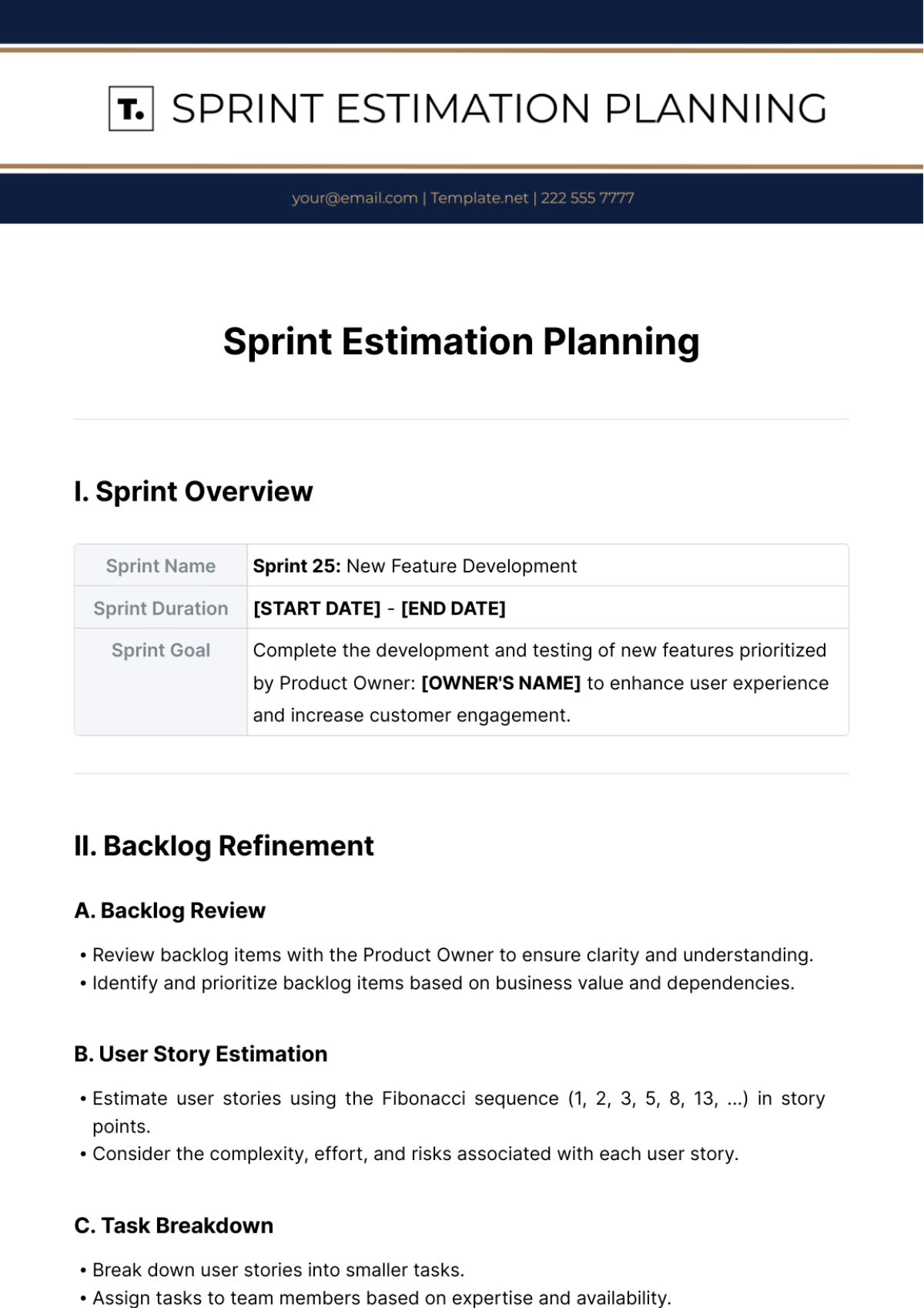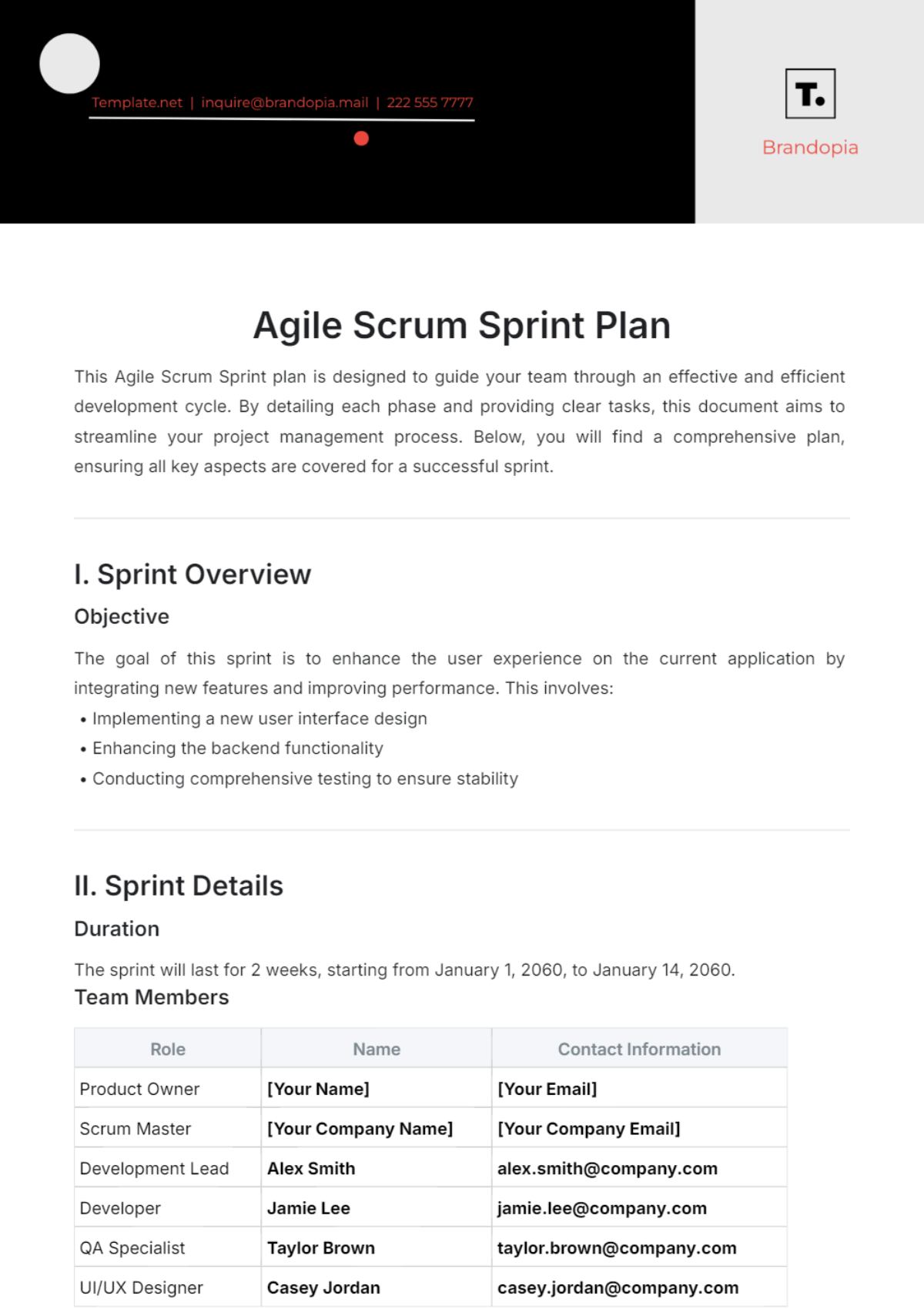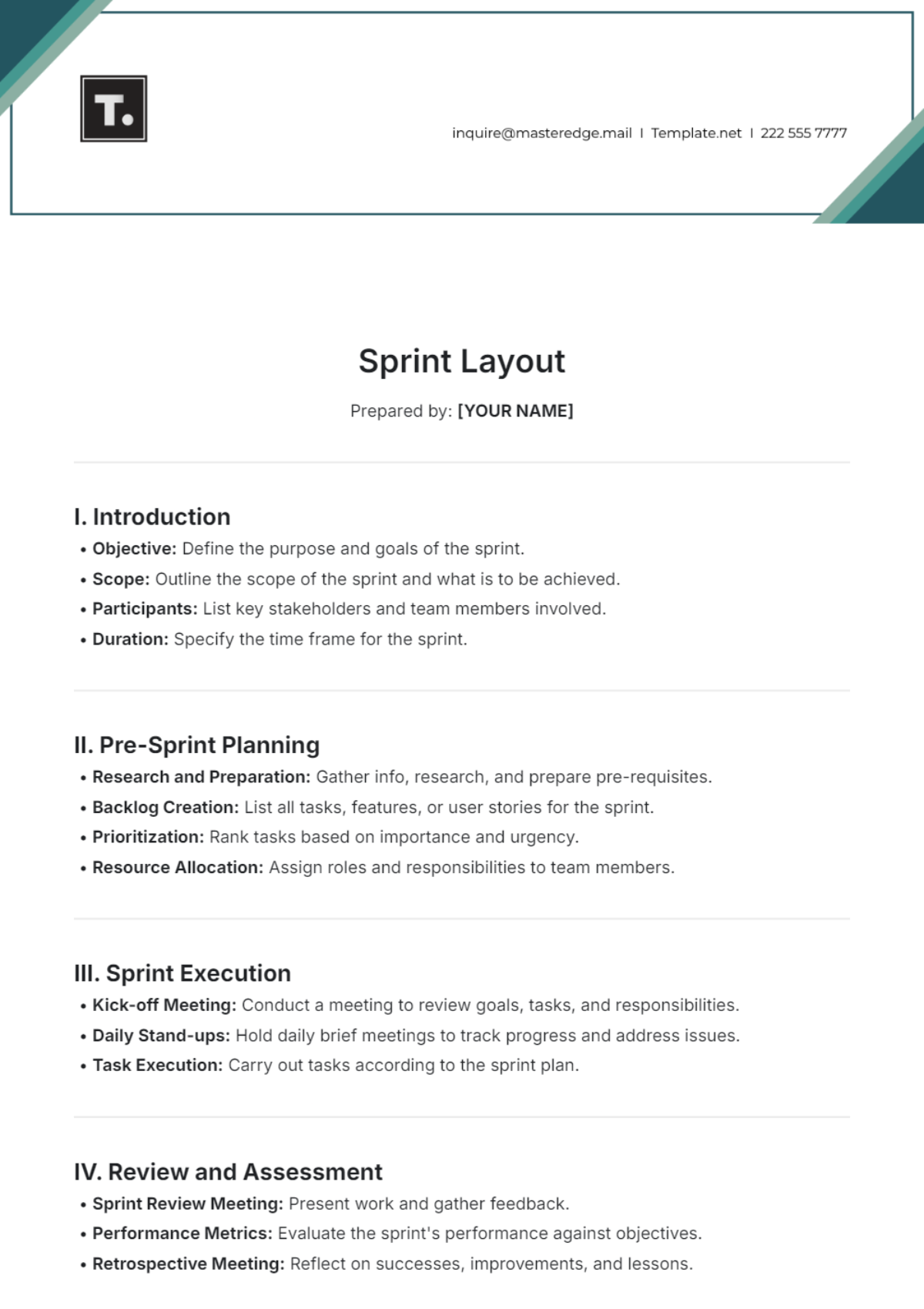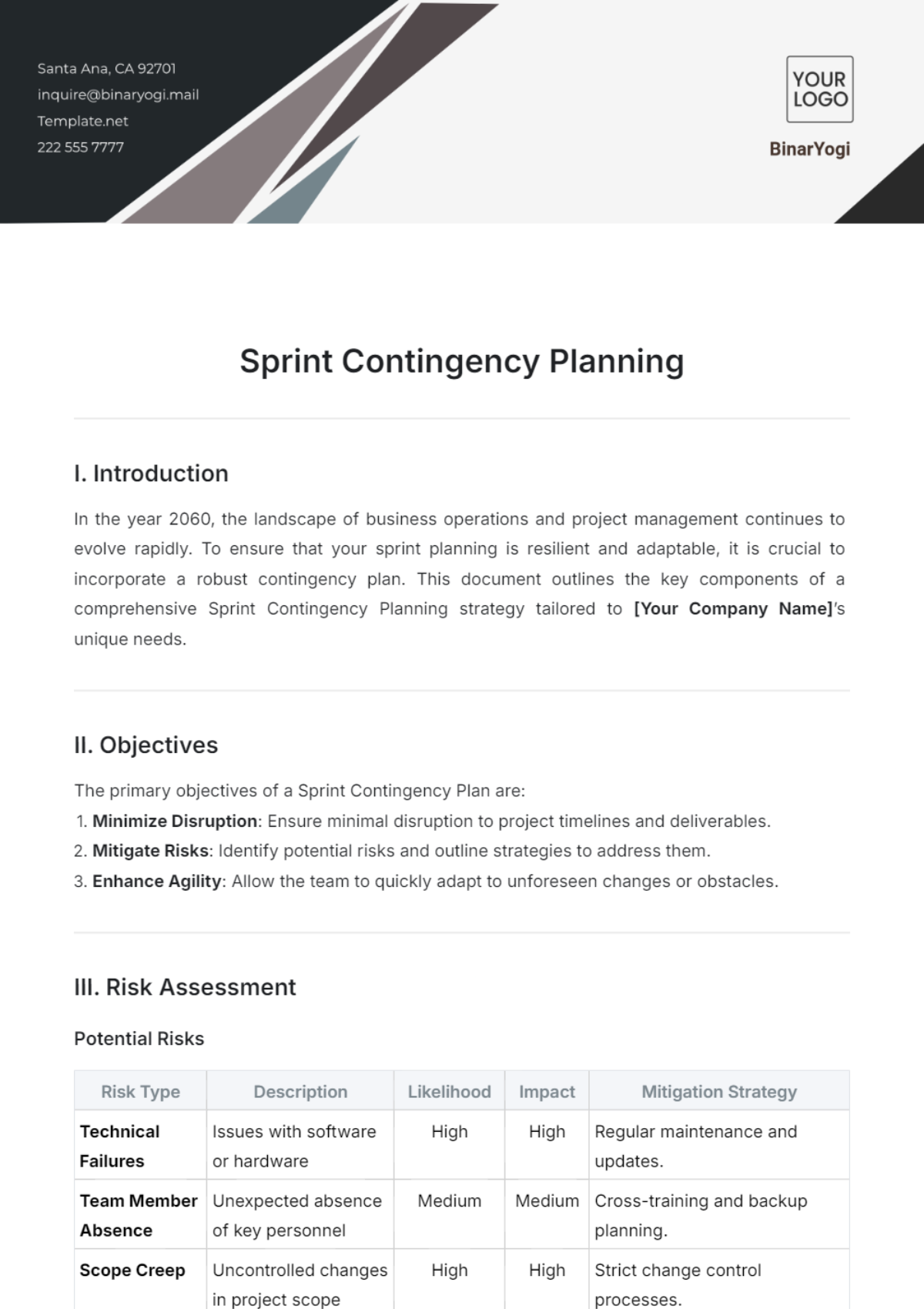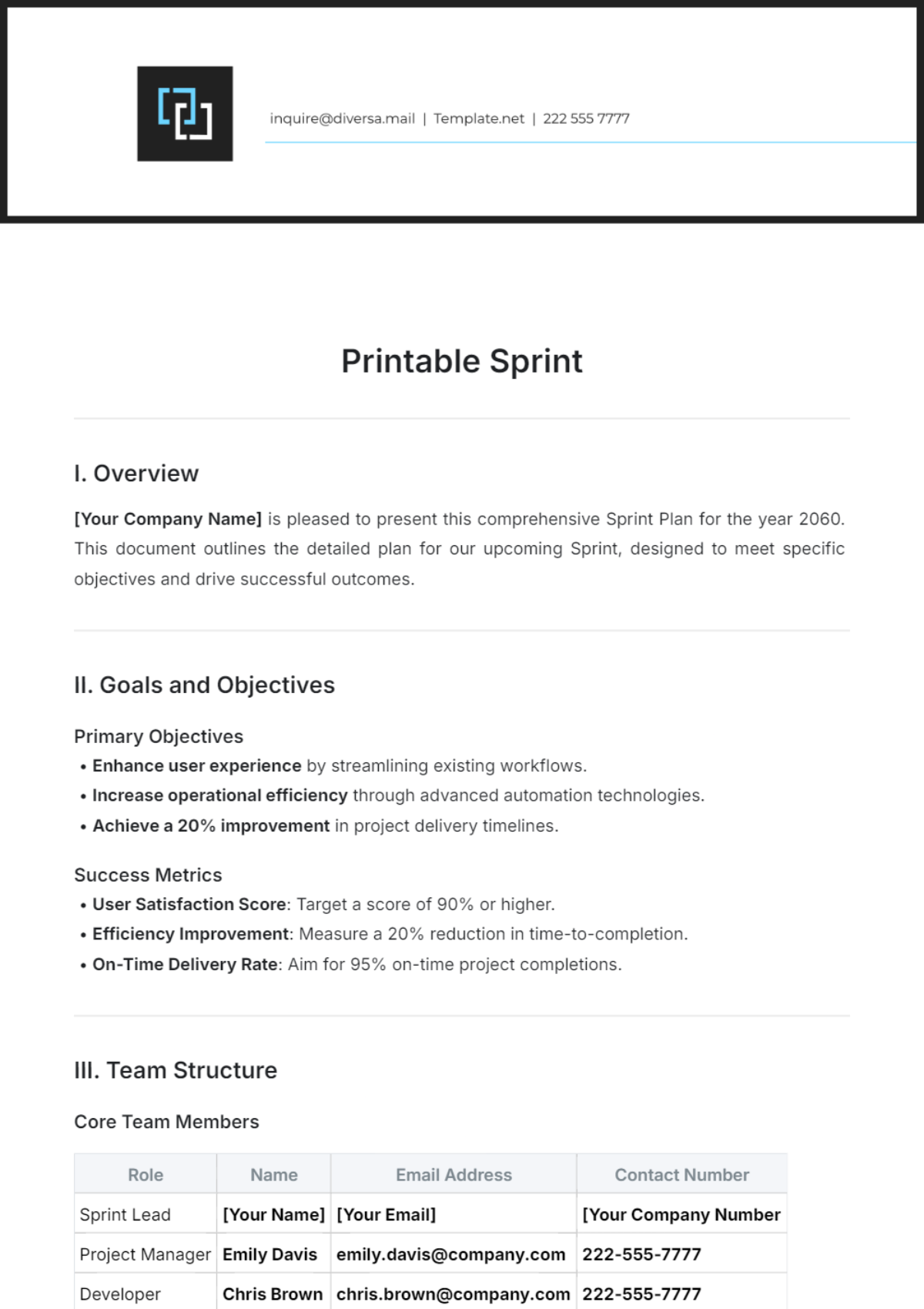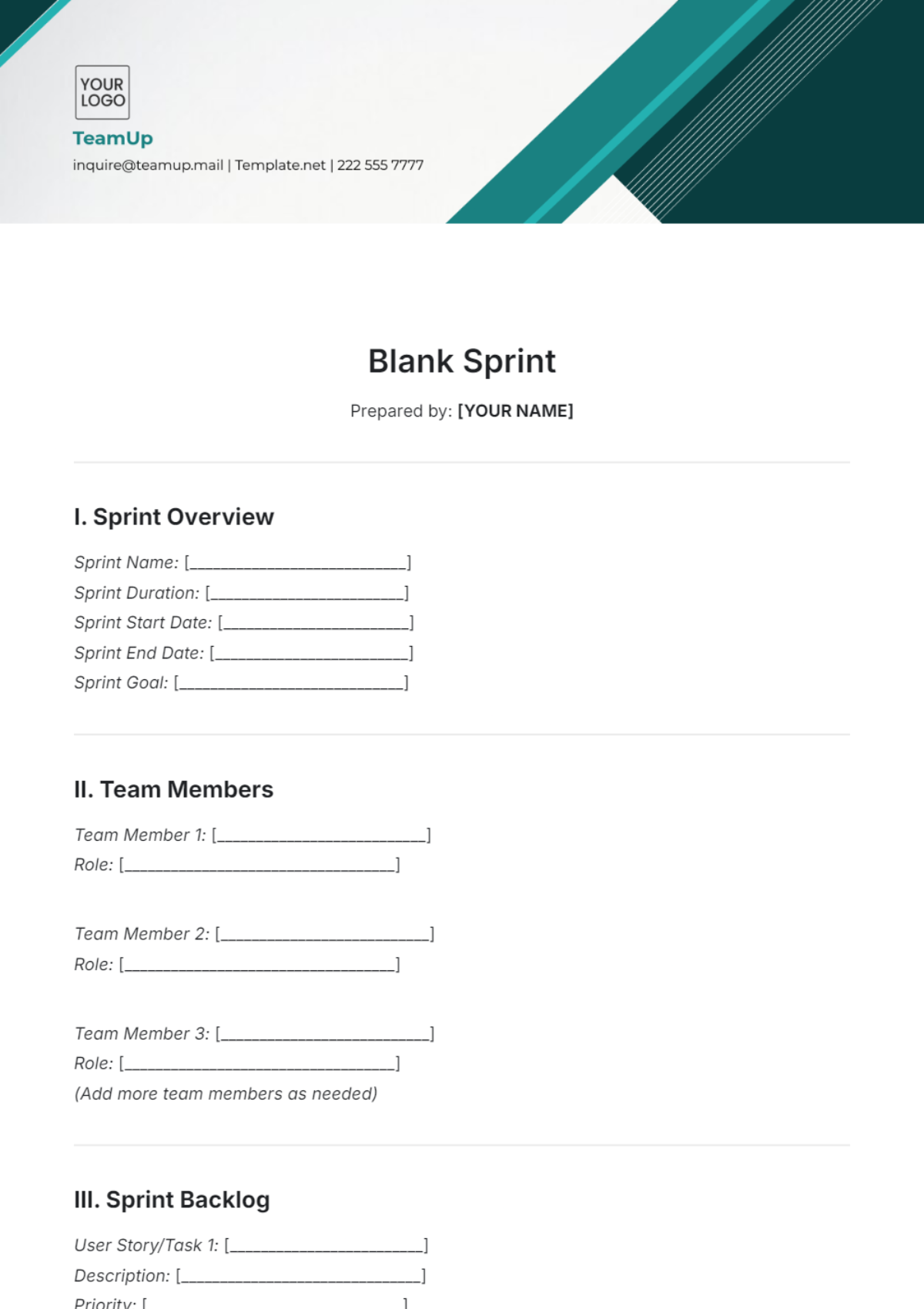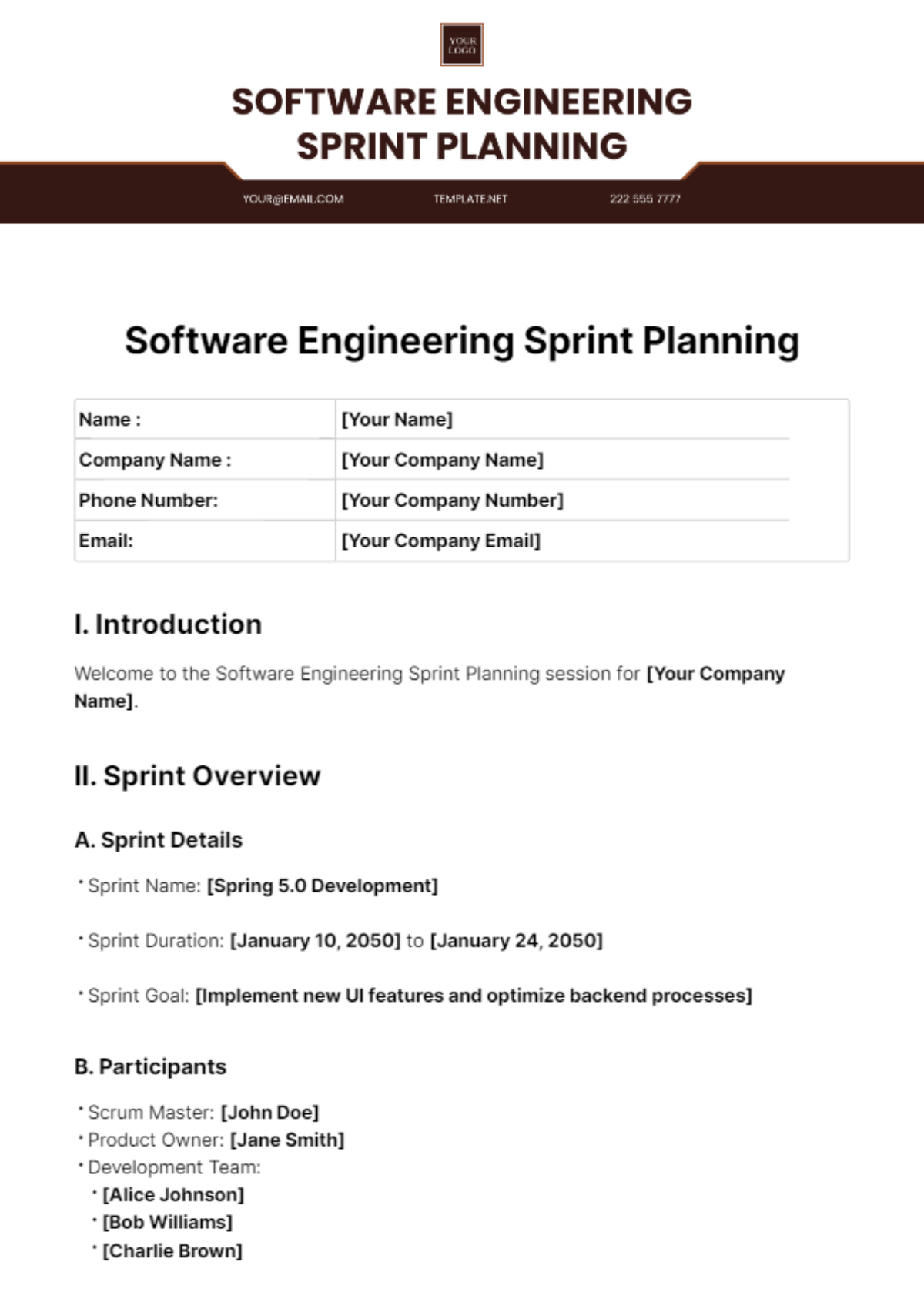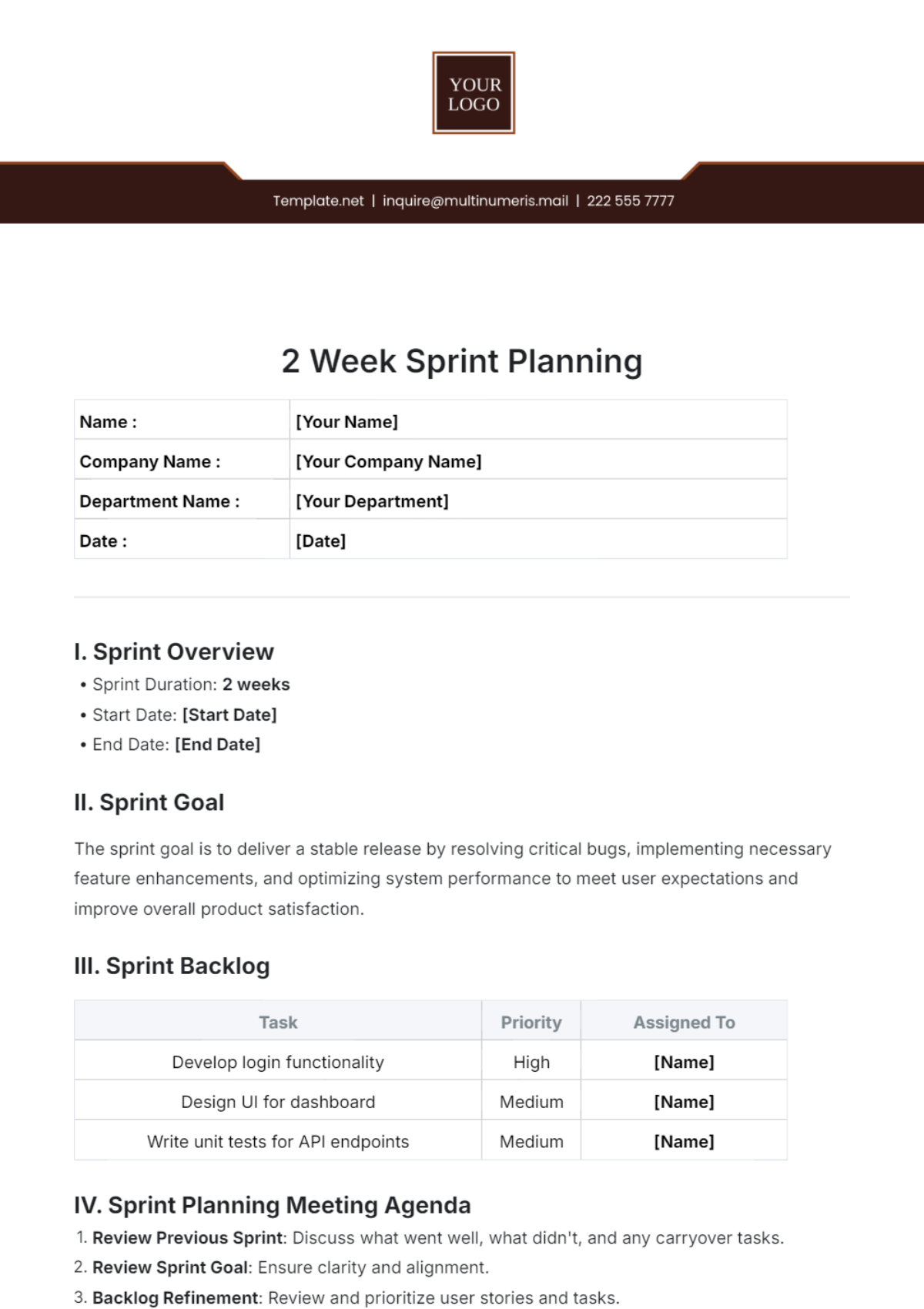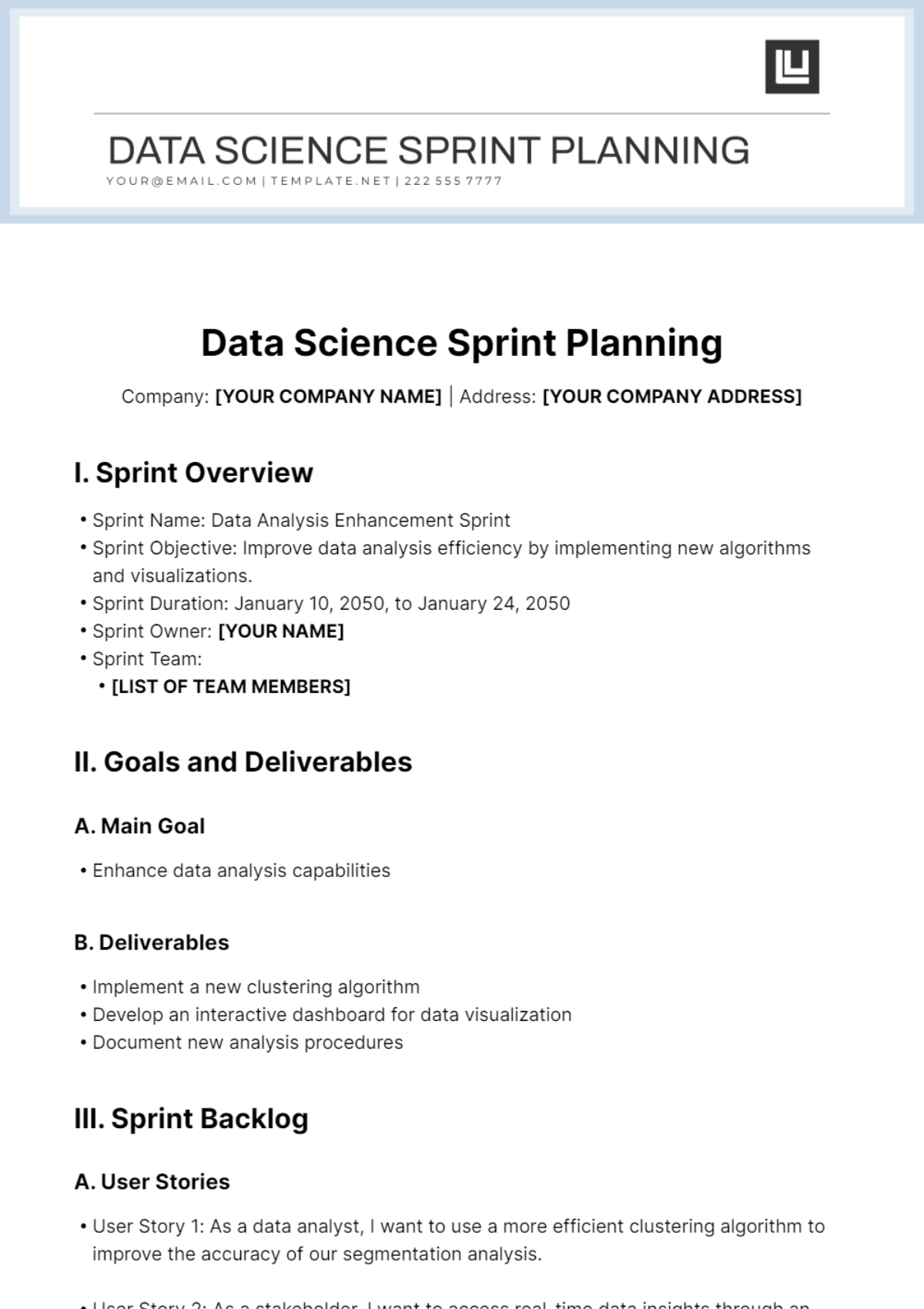Sprint Capacity Planning
I. Overview
In 2060, [Your Company Name] is dedicated to maintaining an agile and efficient sprint planning process. Our capacity planning ensures that each sprint is achievable within the allocated time while maximizing team productivity. This document outlines the detailed capacity planning strategy that [Your Company Name] will employ to ensure optimal resource allocation and delivery within each sprint.
II. Team Structure
Team Composition
Each sprint team at [Your Company Name] is composed of the following roles:
Role | Number of Team Members | Primary Responsibility |
|---|---|---|
Product Owner | 1 | Define and prioritize user stories |
Scrum Master | 1 | Facilitate sprint ceremonies |
Developers | 5 | Implement user stories |
QA Engineers | 2 | Test and ensure product quality |
UX/UI Designers | 2 | Design and optimize the user experience |
Team Availability
The team’s availability for each sprint is calculated based on individual work hours, planned vacations, and other commitments.
III. Sprint Duration
Sprint Length
At [Your Company Name], we adopt a 2-week sprint cycle, totaling 10 working days. Each sprint consists of the following phases:
Planning (Day 1)
Development (Days 2-8)
Testing & QA (Days 9-10)
Sprint Review & Retrospective (Day 10)
Sprint Calendar
Sprint Phase | Duration (Days) | Details |
|---|---|---|
Planning | 1 | Sprint goal setting and backlog refinement |
Development | 7 | Active coding and implementation |
Testing & QA | 2 | Bug fixing and quality assurance |
Review & Retrospective | 1 | Evaluate sprint outcomes and improve process |
IV. Capacity Calculation
Individual Capacity
To calculate each team member's capacity, we consider the following factors:
Total Working Hours: 8 hours per day
Planned Absences: E.g., vacations, public holidays
Meetings and Other Commitments: Daily stand-ups, sprint reviews, etc.
Example Calculation:
Developer A:
Total Working Days: 10
Working Hours Per Day: 8
Planned Absences: 2 days
Meeting Time: 1 hour/day
Available Capacity: (10−2)×(8−1)=56(10 - 2) \times (8 - 1) = 56(10−2)×(8−1)=56 hours
Team Capacity
The total team capacity is the sum of individual capacities, allowing us to allocate tasks effectively and avoid over-commitment.
V. Task Allocation
Estimating Workload
Each task is estimated in hours, and tasks are assigned based on team capacity. We prioritize high-value tasks and ensure that the workload is balanced across the team.
Task Distribution Table
Task | Estimated Hours | Assigned Team Member | Priority |
|---|---|---|---|
Implement Feature X | 20 | Developer A | High |
Design UI for Module Y | 15 | UX Designer B | Medium |
QA Testing for Release Z | 10 | QA Engineer C | High |
Database Optimization | 18 | Developer D | Medium |
VI. Monitoring and Adjustments
Daily Stand-Ups
Daily stand-ups will be used to monitor progress and identify any potential blockers. The team will adjust the workload as necessary to ensure that the sprint goal is met.
Mid-Sprint Review
A mid-sprint review will be conducted on Day 5 to assess progress and reallocate resources if needed.
VII. Contact Information
For any queries regarding the sprint capacity planning, please contact:
[Your Name], Sprint Coordinator
Email: [Your Email]
Phone: [Your Company Number]
VIII. Conclusion
The sprint capacity planning at [Your Company Name] is designed to ensure that each sprint is productive, focused, and aligned with our business goals. By carefully managing our resources and monitoring progress, we aim to deliver high-quality outcomes in every sprint.
























